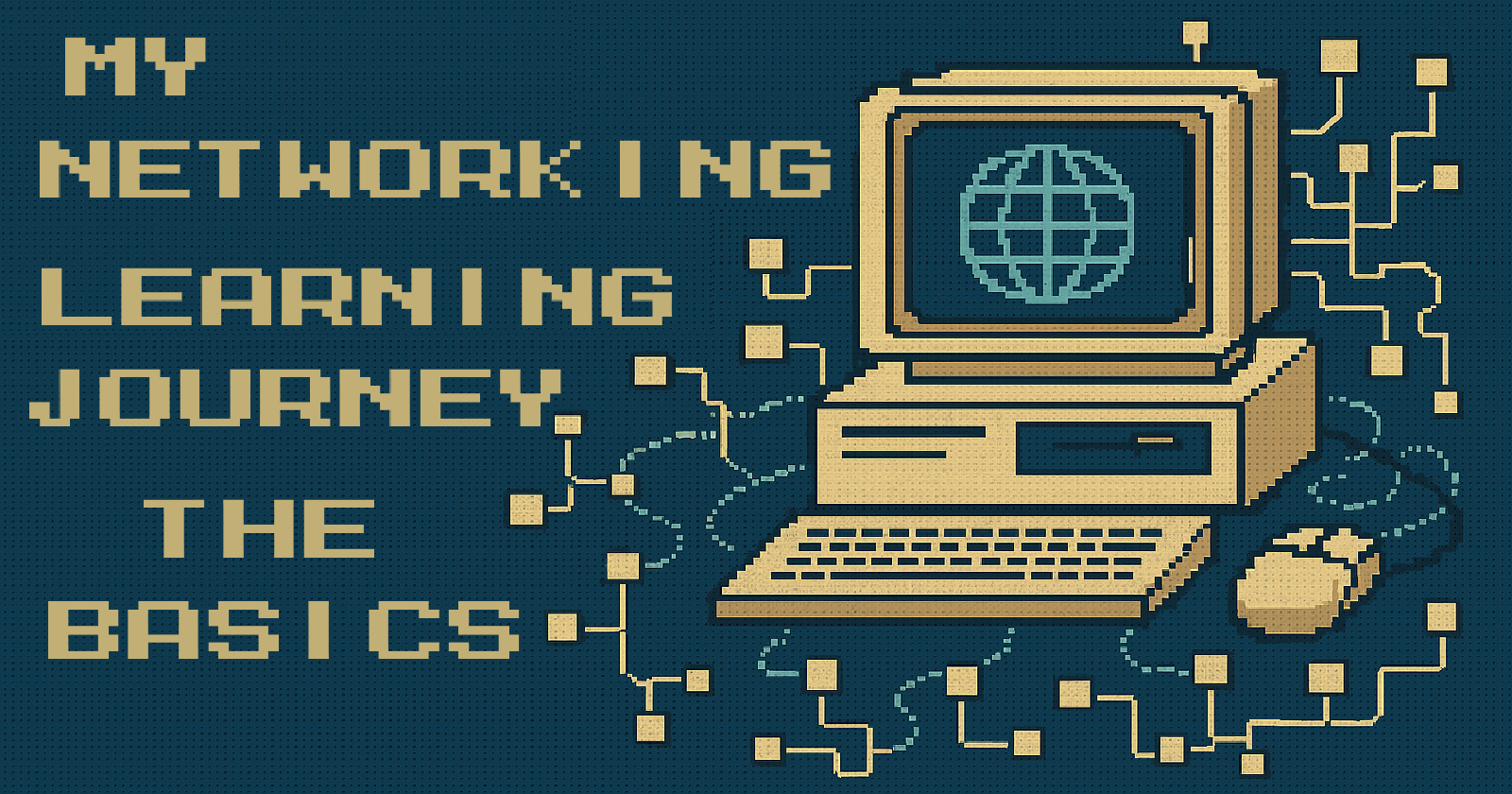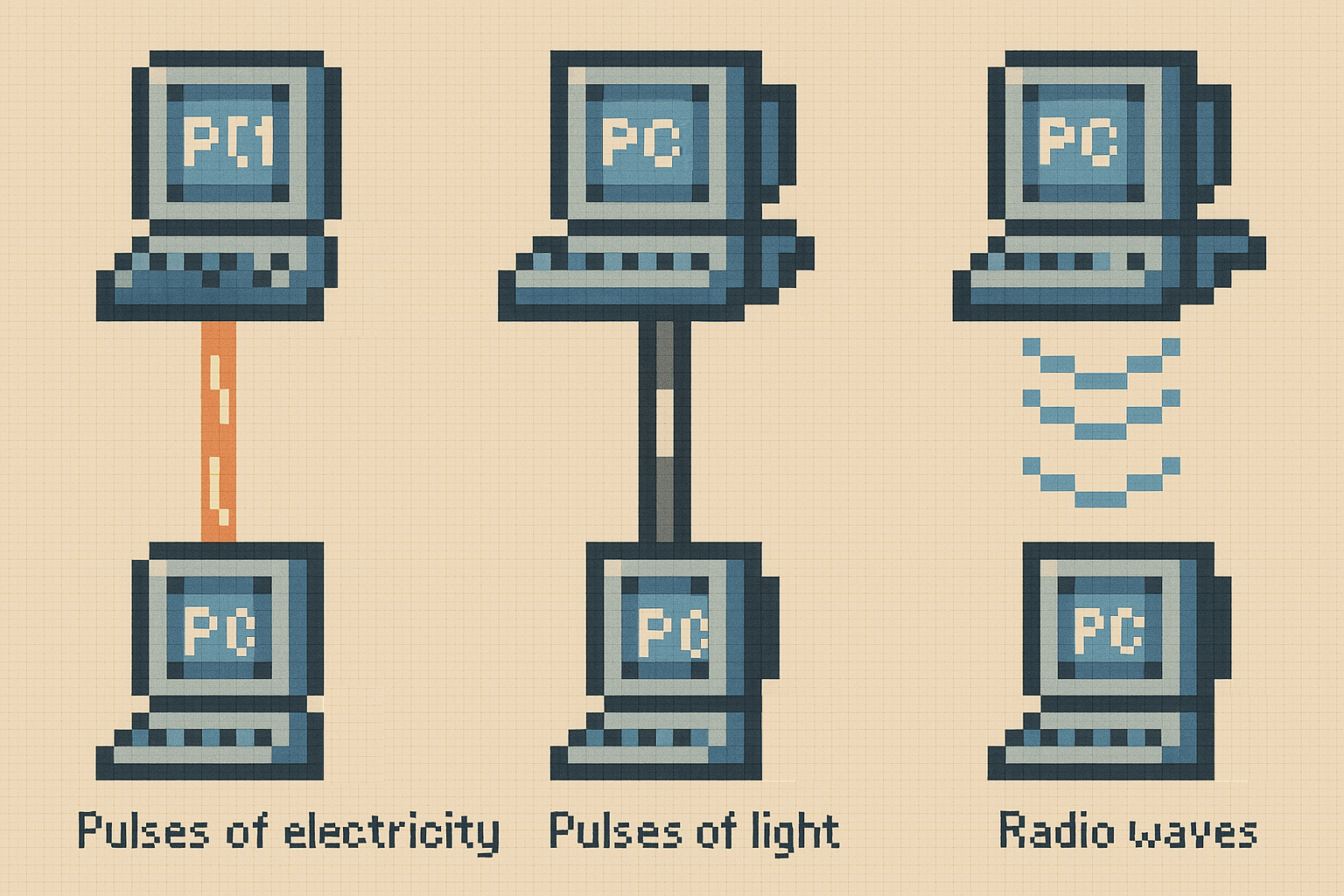My Networking Learning Journey 2: The Basics
 Przemysław Kozłowski
Przemysław Kozłowski
What is the Internet and Who Owns It?
The Internet is a vast network of interconnected computers and various other devices. These devices communicate and interact with each other primarily to exchange information. As a result, the Internet isn't owned by any single entity because it's a global network of interconnected devices communicating using established standards and protocols. It's more accurate to think of the Internet as a collaborative system maintained by numerous organizations, companies, and governments worldwide.
Types of Local Networks
There are different types of local networks:
Small home networks - Home networks where several devices can be connected to each other and to the Internet
Small office/home office - Also known as SOHO networks, these are used in small offices or for connecting from home to work, allowing access to corporate networks and providing access to shared documents, folders, and services
Medium to large networks - Used, for example, in schools or corporations, allowing many computers and devices to connect across multiple locations
World Wide Web - A network of networks - the Internet. Billions of computers connected worldwide
Beyond Computers and Laptops
Beyond computers and laptops, a wide range of devices now connect to the Internet, including:
Mobile devices such as tablets, smartphones, smartwatches, and interactive glasses
Home appliances like security systems, smart home systems, IoT devices - washing machines, refrigerators, etc.
Modern televisions (Smart TVs) and gaming consoles
Smart cars and vehicles
RFID systems
Various sensors such as temperature sensors, humidity monitors, etc.
Medical devices like diabetic sensors and monitors
Data Transmission
There are three main types of data transmitted to the Internet:
Voluntary data - Data we deliberately place online - uploading photos to social media profiles, posting files, publishing blog posts, etc. We understand this data is being collected and stored, and we consciously agree to this.
Inferred data - Data that not everyone is always aware is being collected and stored. This is data generated by our activities. A good example is our credit card activity - when we pay in different places, this data is gathered and can be used to track our habits, preferences, shopping choices, etc.
Observed data - A good example would be location sharing enabled on a phone, which means our location is also collected and stored
What is a Bit?
A bit is the smallest unit of information in IT and essentially the only data format understood by computers. The term "bit" is short for "binary digit," and that's exactly what it means - a unit of data that can have one of two states: 0 or 1. This can be transmitted or stored in various forms - electrical signals, waves, etc., but it always comes down to a value of 0 or 1.
All data on computers and the Internet is transmitted using bits. For example, letters and special characters are represented using bits. According to the American Standard Code for Information Interchange (ASCII), each character consists of, or is represented by, 8 bits. For example:
D - 01000100E - 01000101V - 01010110O - 01001111P - 01010000S - 01010011
This allows virtually any type of data to be stored using zeros and ones.
Methods of Data Transmission
Once data is converted into bits represented by zeros and ones, it must be sent to its destination. For this purpose, three main media are used - electrical cables, fiber optic cables, or electromagnetic waves through the air. The transmitted information may be converted multiple times back and forth (from electrical signals to light pulses, from pulses to electromagnetic waves, and from waves back to electrical signals, etc.) depending on how the medium through which the data is traveling changes.
There are three common methods of signal transmission used in networks:

Electrical signals - Data is transmitted as electrical pulses traveling through copper wires. This is commonly used in Ethernet cables and older telephone lines.
Optical signals - Data is transmitted as pulses of light traveling through thin strands of glass or plastic fiber optic cables. This method allows for much faster transmission speeds and longer distances without signal degradation.
Wireless signals - Data is transmitted through the air using various portions of the electromagnetic spectrum, including radio waves, microwaves, and infrared light. This method is used in Wi-Fi networks, cellular communications, and satellite transmissions.
More Than Just a Network
The Internet is more than just a collection of connected devices—it's the foundation of modern communication, business, and daily life. Understanding how it works, from local networks to global data transmission, is essential for anyone in tech. While we've covered the basics, this is just the beginning. In the next parts of my learning journey, I'll dive deeper into networking concepts, protocols, and real-world applications. Stay tuned for more insights as I continue exploring the backbone of our digital world!
Subscribe to my newsletter
Read articles from Przemysław Kozłowski directly inside your inbox. Subscribe to the newsletter, and don't miss out.
Written by

Przemysław Kozłowski
Przemysław Kozłowski
I'm a software developer with over 10 years of experience in the IT industry. I began my career as a C# developer and, after a few years, had the opportunity to explore Node.js. That experience completely captivated me, and I decided to shift my focus toward JavaScript and backend development with Node.js — though I’ve continued to contribute to a long-term C# side project as well. In the past two years, I’ve also ventured into the world of DevOps. It was a completely new area for me, and I started from scratch. It's been an exciting challenge — since then, every day has been filled with learning and new experiences. This journey inspired me to document my progress and reflections by starting this blog as a learning journal. Currently, I'm particularly focused on improving my understanding of networking — an area I’ve always found challenging — as well as deepening my skills in Docker and Ansible. I’m also planning to set up a Kubernetes cluster in my home lab to begin learning container orchestration hands-on. Additionally, I’ve started learning Python, which I see as a powerful tool for automation and scripting in the DevOps toolkit. The purpose of this blog is to document my learning journey and track my progress, but also to share knowledge and support others who are just beginning their DevOps path and considering a career transition into this field. Outside of tech, I'm a happy father of two boys. I've managed to pass on my love for retro games, swimming and cycling to them. I dedicate most of my free time to being with them — and when I do have a moment to myself, I usually spend it on my road bike.